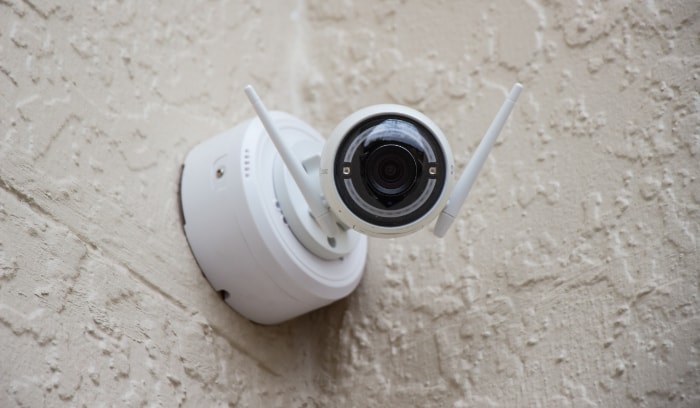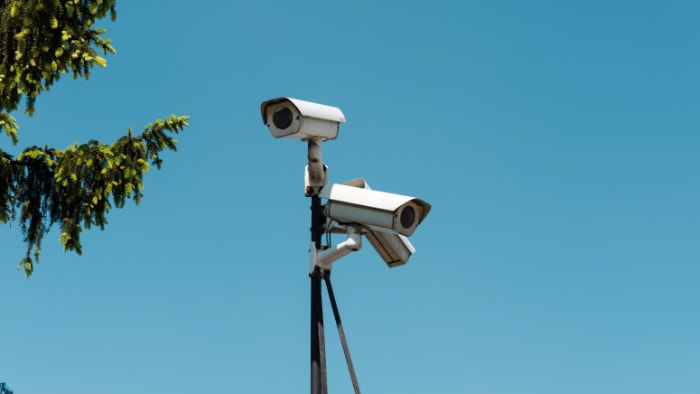Why Are Security Cameras So Low Quality? Explained

Security cameras are everywhere, from corner stores to corporate offices, playing a silent yet crucial role in our safety. Yet, when a critical incident occurs, we often find ourselves squinting at grainy footage, wondering why the quality isn’t better. This contradiction is not just a minor annoyance; it’s a significant concern in our tech-savvy world where high-definition video is the norm.
Cost-Effectiveness and Budget Constraints
When it comes to security cameras, the old adage ‘you get what you pay for’ often rings true. However, the decision-making process for choosing security cameras involves a complex balance between cost and quality.
The Economics Behind Security Camera Installations
Security camera systems are not just about purchasing cameras; they involve installation, maintenance, and monitoring costs. For many businesses and institutions, the need to cover large areas with multiple cameras leads to a significant investment.
To keep this investment manageable, decision-makers often opt for more affordable, lower-quality cameras. This approach allows for broader coverage within a limited budget, but it comes at the cost of reduced image clarity and functionality.
Balancing Quantity with Budget Limitations
The choice between a few high-quality cameras and several lower-quality ones is a common dilemma. High-quality cameras offer better resolution and clearer images, which are crucial for identifying faces or license plates.
However, their higher price means fewer units can be installed. On the other hand, lower-quality cameras allow for more extensive coverage, ensuring no area is left unmonitored.
This trade-off is a key factor in why many public and private spaces are equipped with cameras that don’t match the high-definition standards of consumer electronics.
Case Examples of Budget Constraints Affecting Camera Quality
Real-world examples highlight how budget constraints have led to the installation of lower-quality cameras. For instance, small businesses often cannot afford the latest technology and opt for basic models.
Similarly, city-wide surveillance projects must balance the need to cover vast areas with fiscal responsibility, often resulting in the selection of more cost-effective, albeit lower-quality, camera options. These examples demonstrate how financial limitations play a crucial role in the widespread use of lower-resolution security cameras.
Storage and Data Management
The quality of security cameras is not just about the hardware; it’s also significantly influenced by storage and data management capabilities. High-resolution footage requires more storage space and bandwidth for transmission, leading to higher costs and more complex data management.
Role of Storage Requirements in Camera Quality
Higher resolution video generates larger files, which demand more storage space. For security systems, this means either investing in large, expensive storage solutions or compromising on video quality to reduce file size.
Many organizations, especially those requiring 24/7 surveillance, choose lower resolution cameras to manage storage needs within their budget. This decision directly impacts the clarity and detail of the footage captured.
Bandwidth and Data Transmission
The quality of security camera footage is also limited by bandwidth constraints. High-quality video requires more bandwidth to transmit data from the camera to the storage system or monitoring center.
In environments where bandwidth is limited, either due to technical restrictions or cost considerations, the resolution and frame rate of the camera are often reduced. This ensures a steady stream of video without overloading the network, but at the expense of image quality.
Impact of Cloud Storage Solutions
Cloud storage has emerged as a solution to the storage and bandwidth challenges faced by traditional security systems. By storing footage on remote servers, organizations can access scalable storage options and better handle high-resolution video.
However, cloud storage comes with its own costs and security considerations. While it offers a way to improve camera quality without the need for extensive on-site storage, it also introduces ongoing subscription costs and concerns about data privacy and security.
Environmental and Durability Considerations

The durability and environmental resilience of security cameras play a crucial role in their overall quality and effectiveness. Cameras need to withstand various weather conditions, temperatures, and potential vandalism, which can significantly impact their design and capability.
Designing for Durability
Security cameras must be built to endure the elements. This includes resistance to rain, snow, extreme temperatures, and even physical tampering.
Manufacturers often prioritize durability over high-resolution imaging to ensure the camera remains functional in harsh conditions. As a result, the camera’s casing and protective features might limit the sophistication of the lens and sensor, leading to a compromise in image quality.
Trade-Off Between Robustness and High-Resolution Imaging
Creating a camera that is both highly durable and capable of producing high-quality images is challenging. The additional protective housing and materials required for making a camera weather-resistant can interfere with the camera’s optical capabilities.
For instance, a thick, protective dome can distort the image quality. Therefore, manufacturers often have to find a middle ground, balancing the need for durability with the desire for clear imagery.
Impact of Environmental Challenges on Camera Performance
Different environments pose unique challenges for security cameras. For example, cameras used in coastal areas must be resistant to saltwater corrosion, while those in urban settings may need additional protection against vandalism.
In colder climates, cameras must function reliably in sub-zero temperatures, which can affect battery life and lens clarity. These environmental considerations directly influence the type of camera selected and its inherent quality.
Intended Use and Real-World Applications
The quality of security cameras is closely linked to their intended use and the specific demands of real-world applications. Different environments and purposes require varying levels of image quality, field of view, and additional features.
Differentiating Between Consumer-Grade and Professional Security Cameras
Consumer-grade security cameras, often used in homes and small businesses, differ significantly from professional-grade systems used in larger or more security-sensitive environments. While consumer cameras may prioritize ease of use and affordability, professional systems focus on higher resolution, better low-light performance, and more durable construction.
This distinction explains why a camera used in a retail store may not offer the same image quality as one used in a bank or government building.
Role of Camera Placement and Field of View in Perceived Quality
Where and how a camera is placed can greatly impact its perceived quality. Cameras intended for wide-area surveillance in public spaces might have a broader field of view but lower resolution, as they are designed to monitor large areas rather than capture fine details.
Conversely, cameras placed at entry points or sensitive areas may have higher resolution to capture clear images of faces or license plates. This strategic placement is a key consideration in the overall effectiveness of a surveillance system.
Specific Uses and Requirements for Various Industries
Different industries have unique requirements that dictate the quality of their security cameras. For instance, retail businesses may need high-quality cameras to identify shoplifting incidents, while industrial sites might prioritize ruggedness and reliability over image clarity.
In transportation hubs like airports or train stations, the focus might be on wide-angle cameras to monitor large crowds. Each of these applications demands specific features and capabilities from their security cameras, influencing the overall quality and design of the systems used.
Consumer Awareness and Expectations
Consumer perceptions and expectations play a significant role in the discussion around security camera quality. With advancements in personal technology, especially in smartphones and home electronics, people often expect similar standards from security cameras.
Mismatch Between Public Perception and Actual Capabilities
Many people are accustomed to high-resolution images and videos from their personal devices. This familiarity leads to an expectation that security cameras, too, should deliver similar quality.
However, what’s often overlooked are the different purposes and constraints between consumer electronics and security systems. This gap in understanding contributes to the surprise and disappointment when security footage fails to meet these high expectations.
Influence of Media and Entertainment on Expectations
Movies and TV shows often depict security cameras with incredible zoom capabilities and crystal-clear resolution, creating a skewed perception of their real-world performance. This portrayal influences public expectations, leading many to believe that all security cameras can easily identify minute details from great distances.
The reality, however, is far from this fiction. Most security cameras are designed for broader coverage and situational awareness, not the high-fidelity detail shown in entertainment media.
Conclusion
Security cameras, integral to modern surveillance, often face criticism for their perceived low quality. This exploration reveals that the reasons are multifaceted, ranging from cost constraints to environmental challenges.
Each factor, be it budget limitations, storage needs, or intended use, plays a pivotal role in determining the quality of these cameras. Consumers’ expectations, influenced by personal technology and media portrayals, often don’t align with the practical realities of security camera technology.
It’s important to recognize that while advancements are ongoing, the current state of security cameras is a balance between various competing demands. Understanding these constraints and real-world applications helps in appreciating the capabilities and limitations of the security cameras that play a crucial role in our daily safety.
As technology evolves, so too will the quality of these essential tools, continually adapting to meet the complex needs of security and surveillance in our dynamic world.



